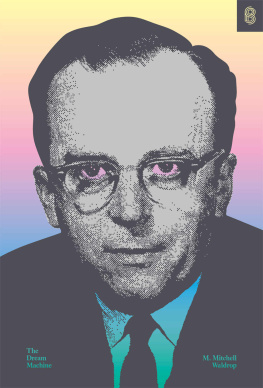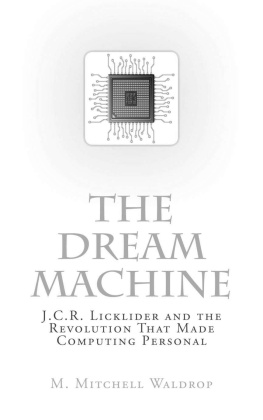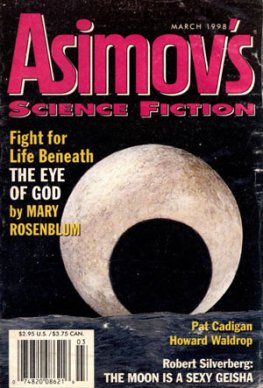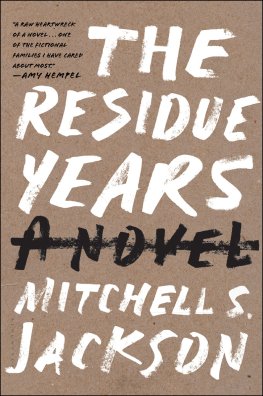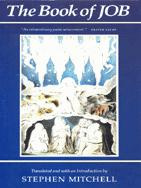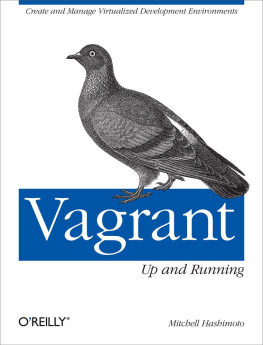M. Mitchell Waldrop - The Dream Machine
Here you can read online M. Mitchell Waldrop - The Dream Machine full text of the book (entire story) in english for free. Download pdf and epub, get meaning, cover and reviews about this ebook. year: 2018, publisher: Stripe Press, genre: Computer. Description of the work, (preface) as well as reviews are available. Best literature library LitArk.com created for fans of good reading and offers a wide selection of genres:
Romance novel
Science fiction
Adventure
Detective
Science
History
Home and family
Prose
Art
Politics
Computer
Non-fiction
Religion
Business
Children
Humor
Choose a favorite category and find really read worthwhile books. Enjoy immersion in the world of imagination, feel the emotions of the characters or learn something new for yourself, make an fascinating discovery.
- Book:The Dream Machine
- Author:
- Publisher:Stripe Press
- Genre:
- Year:2018
- Rating:5 / 5
- Favourites:Add to favourites
- Your mark:
- 100
- 1
- 2
- 3
- 4
- 5
The Dream Machine: summary, description and annotation
We offer to read an annotation, description, summary or preface (depends on what the author of the book "The Dream Machine" wrote himself). If you haven't found the necessary information about the book — write in the comments, we will try to find it.
The Dream Machine — read online for free the complete book (whole text) full work
Below is the text of the book, divided by pages. System saving the place of the last page read, allows you to conveniently read the book "The Dream Machine" online for free, without having to search again every time where you left off. Put a bookmark, and you can go to the page where you finished reading at any time.
Font size:
Interval:
Bookmark:
by M. Mitchell Waldrop
A sprawling history of the ideas, individuals, and groups of people that got us from punch cards to personal computers comprehensive impressive [and] compelling.
The New York Times Book Review
The Dream Machine works admirably as an exploration of the intellectual and political roots of the rise of modern computing. Its an ambitious and worthwhile addition to the history of science.
San Francisco Chronicle
The story is fascinating, played out in almost 500 pages of engrossing politics, personalities, and passions. This is not a casual readbut for those who want the whole story, well told, it is a very good one.
Wired
A sweeping history of personal computing, made vivid by rich detail.
The St. Louis Pos t - Dispatch
A well-reported story about the overwhelming power of vision and tenacity.
USA Today
An informative and engaging history.
Library Journal
When people ask me about Xerox Parc, I always tell them about J . C . R. LickliderLickand how he formed the ARPA Information Processing Techniques Office in 1962 and started the great research funding for interactive computing and pervasive worldwide networks that has resulted in most of the technology we use today: both via the inventions of the eventually 16 or so ARPA projects at various universities and think tanks, and by creating the next generations of computing researchers, many of whom became the founders and mainstays of Xerox Parc. The top book I recommend to read about this large process that stretched over 20 years is The Dream Machine by M. Mitchell Waldrop. It is the most accurate, has the most detail, and has the best organization and writing. He is able to admirably catch many of the most important parts of both the history and the spirit of the many headed research and engineering processes that together created our interactive networked information world.
Alan Kay
A masterpiece! A mesmerizing but balanced and comprehensive look at the making of the information revolutionthe people, the ideas, the tensions, and the hurdles. And on top of that, it is beautifully written.
John Seely Brown, former director of Xerox P A R C , coauthor of The Social Life of Information
Waldrops account of [Lickliders] and many others world-transforming contributions is compelling.
John Allen Paulos, mathematician and professor at Temple University
At a time when computers were a short step removed from mechanical data processors, Licklider was writing treatises on human-computer symbiosis, computers as communication devices, and a now not-so-unfamiliar Intergalactic Network. His ideas became so influential, his passion so contagious, that Waldrop coined him computings Johnny Appleseed. In a simultaneously compelling personal narrative and comprehensive historical exposition, Waldrop tells the story of the man who not only instigated the work that led to the internet, but also shifted our understanding of what computers were and could be.
M. Mitchell Waldrop, formerly a senior writer at Science magazine, is the author of Complexity and Man-Made Minds . He lives in Washington, D.C.

Ideas for progress
San Francisco, California
press.stripe.com
J. C. R. Licklider and the revolution that made computing personal
by M. Mitchell Waldrop
To AEF
The Dream Machine
2018 M. Mitchell Waldrop
sites.google.com/view/mmwaldrop
All rights reserved. No part of this publication may be reproduced or transmitted in any form or by any means, electronic or mechanical, including photocopying, recording or any other information storage and retrieval system, without prior permission in writing from the publisher.
Published in the United States of America
by Stripe Press / Stripe Matter Inc.
Stripe Press
Ideas for progress
San Francisco, California
press.stripe.com
Printed by Hemlock in Canada
ISBN : 9781732265110
Fourth Edition
eBook by Bright Wing Books
Prologue
Tricycles.
Thats what Tracy would always remember most about it: tricycles in the Pentagon.
It was a Saturday afternoon in late 1962 or maybe early 1963sometime in the Kennedy administration, anyway, not too long after Tracys family had moved down from the Boston area so his father could go to work for the Defense Department. The air in Washington was electric in those days, with all the energy and drama of a new, young administration. The Cuban Missile Crisis, the Berlin Wall, the Civil Rights marchesit was heady stuff for a fifteen-year-old. So when his dad had offered to take him along to his office that afternoon while he picked up some papers hed forgotten to bring home, Tracy had jumped at the chance. He was still slightly awestruck at the very thought of the Pentagon.
Well, it was an awesome place, especially when you saw it up close. The Pentagon was nearly a thousand feet on a side and sat up on a little rise like a walled city. Tracy and his father had left their car in an immense parking lot and hiked to the front door. They had gone through a very impressive security procedure at the guard station, where Tracy had been signed in, vouched for, and given a badge. They had walked on in and started down the hallway into the nerve center for the defense of the Free World. And the first thing Tracy had seen was some earnest-looking young soldiers moving up and down the halls to deliver the interoffice mailpedaling grown-up-sized tricycles.
It was absurd. But the soldiers on the tricycles seemed very serious about their work. And Tracy had to admit that the tricycles made a certain amount of sense for getting around: the Pentagon had some very long hallways. He thought he and his father were going to walk forever.
Actually, Tracy thought it was strange that his father worked in the Pentagon at all. You couldnt imagine anyone less like a general, or a bureaucrat, or a politician. His dad was more like an overgrown kid. He looked ordinary enough: a tall, slightly chubby guy in a tweed sports coat and dark-rimmed glasses. But he had this mischievous expression on his face, as if he were always looking for a way to stir things up. Take dinnertime, for example, which was never what you would call casual where Dad was concerned. Unless his Pentagon job took him out of town, he would always come home to eat with the family before going back to work in the evening. It was fun: Dad would tell stories and make awful puns, and sometimes hed crack himself up before he could even get to the punch line. Hed laugh so hard you just had to laugh with him. But the very first thing hed always do was turn to Tracy and his thirteen-year-old sister Lindy and ask, What have you done today that was altruistic, creative, or educational? And he meant it. Tracy and Lindy would have to think through all the things they had done that day to find something they could fit into one of those categories.
Eating out could be pretty intense, too. Mom and Dad both loved to try new restaurants. But while they were waiting for the food to arrive, Dad would put Lindy and Tracy to work on some brainteasers like If a train is going west at forty miles per hour and an airplane is flying overhead at ... Tracy got to be pretty good at these, to the point where he could generally work out the answers in his head. But Lindy would just develop this resigned thirteen-year-olds expression.
OK , Lindy, Dad would ask, if a bike wheel is rolling along the ground, do all the spokes move at the same speed?
Font size:
Interval:
Bookmark:
Similar books «The Dream Machine»
Look at similar books to The Dream Machine. We have selected literature similar in name and meaning in the hope of providing readers with more options to find new, interesting, not yet read works.
Discussion, reviews of the book The Dream Machine and just readers' own opinions. Leave your comments, write what you think about the work, its meaning or the main characters. Specify what exactly you liked and what you didn't like, and why you think so.

